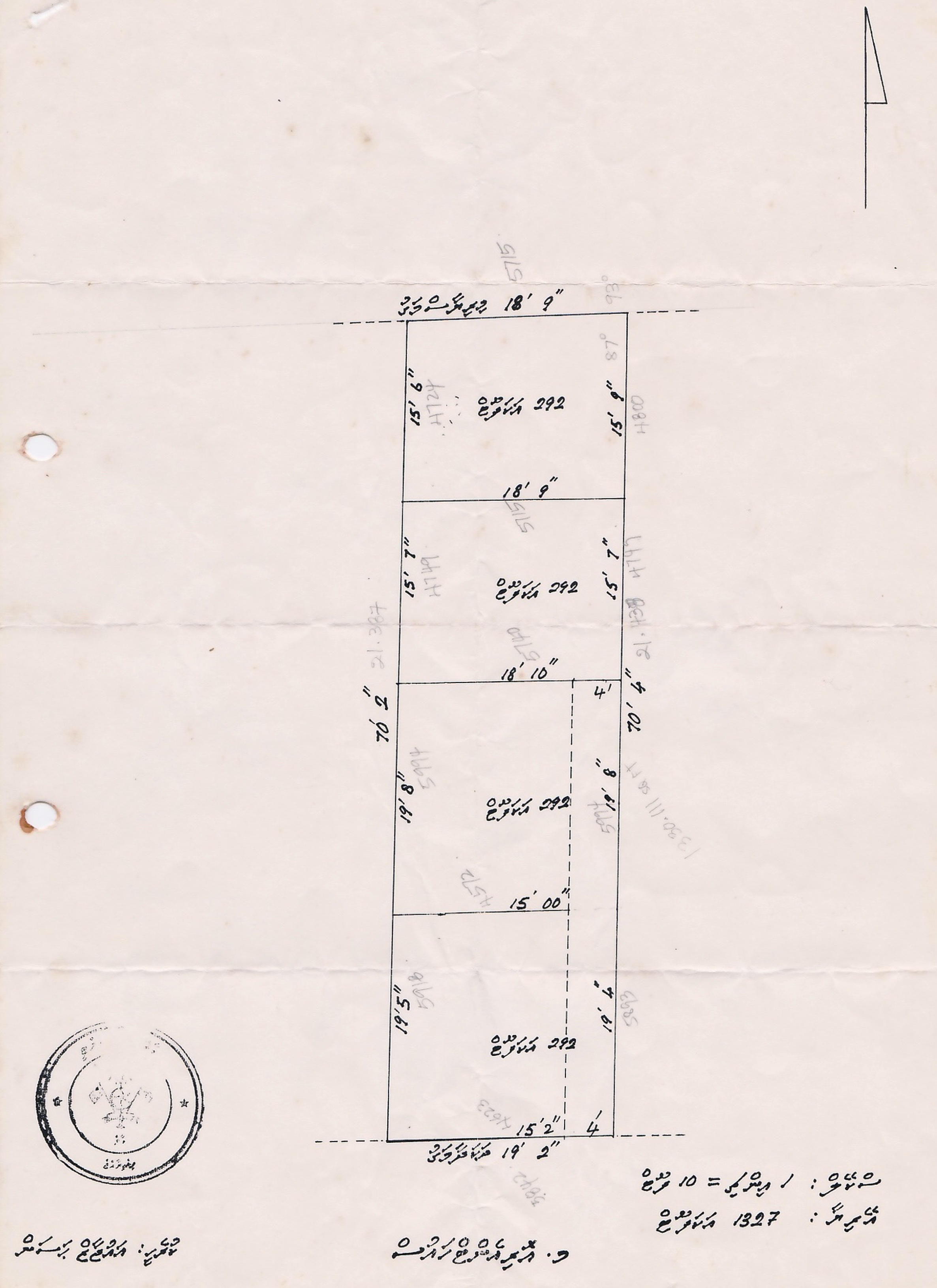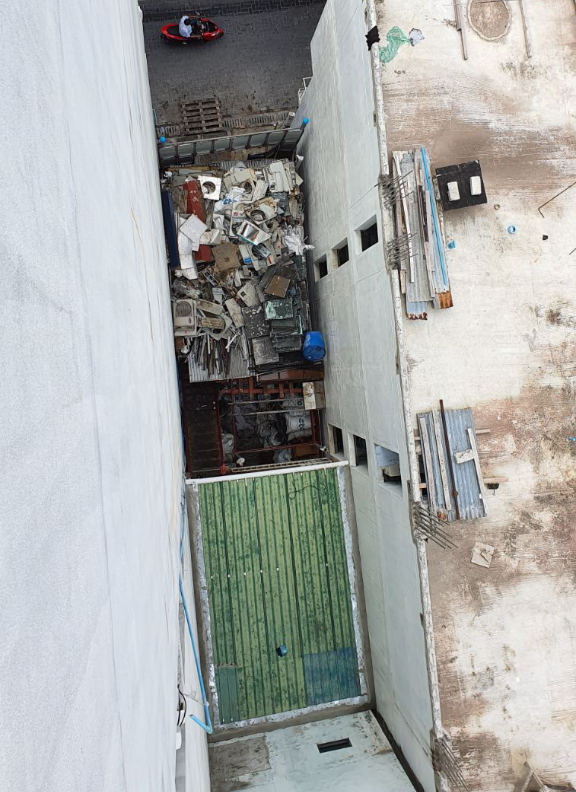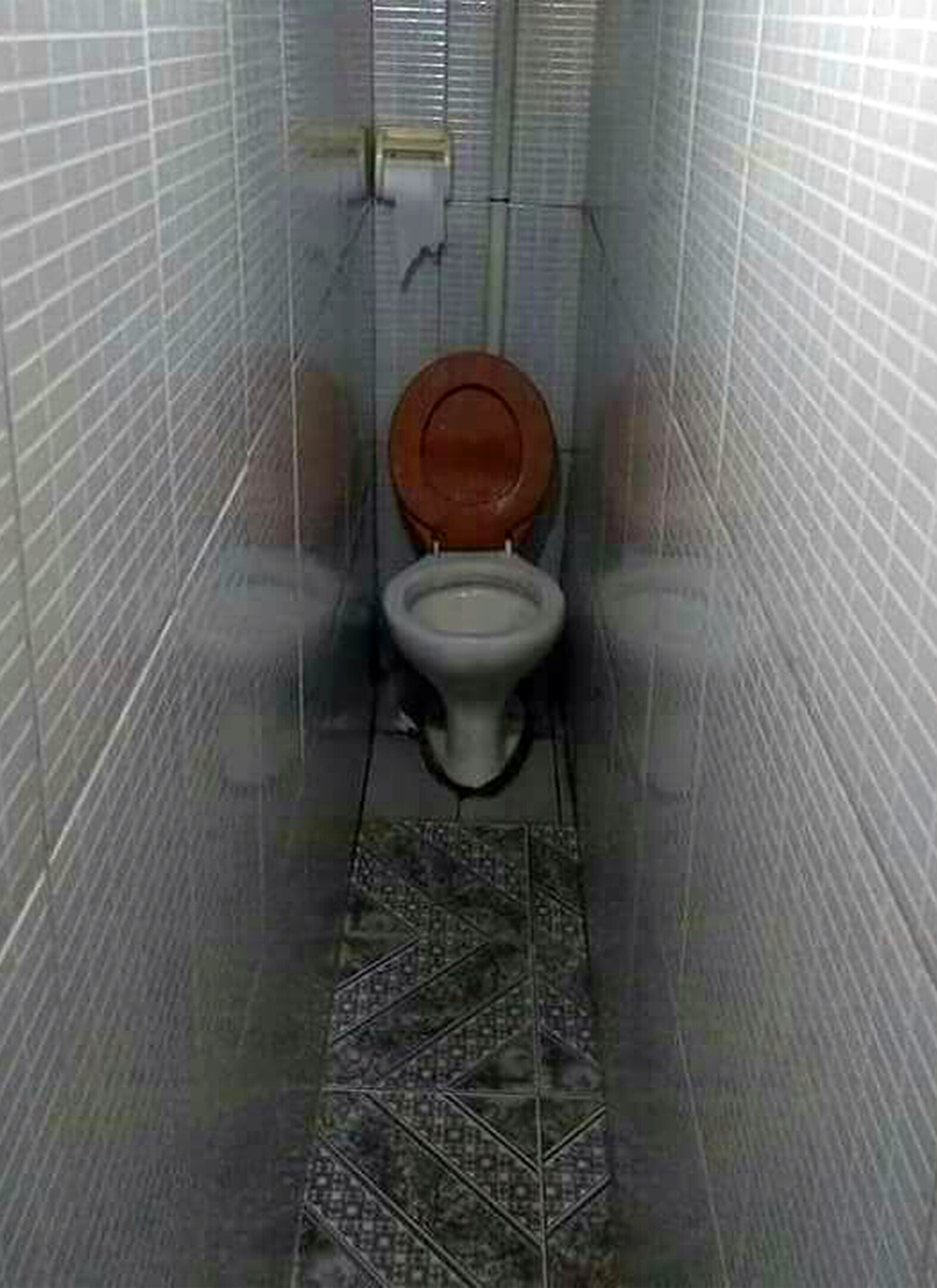Maldives is famous for its pristine clear lagoons and white sandy beaches throughout the world. However, the local denizens of Mal’e experience an image which is far from the portrait of the ‘Paradise on Earth’.
Since the 1970’s, Mal’e has been experiencing population growth on an unsustainable scale. People from various islands have been flocking to the capital in addition to its own population growth. The situation is further worsened by the constant influx of workers from neighbouring countries like India, Sri Lanka and Bangladesh. Outward expansion of the city is confined by the surrounding reef. Mal’e has been reclaimed to the maximum and cannot expand any further. New land ownerships are no longer allocated to the growing populace of Male. Hence plots of land are sliced up among the heirs or relatives of deceased landowners. This has resulted in the buildable spaces decreasing in size to miniscule proportions.
Examples of shrinking plots


Above, image 1 shows a plot divided among 4 people; resulting in new plot sizes of 292 sqft each with a small lane to access 3 of them. The top view of a similar plot, of approximately 300 sqft, can be seen in the next image. In some cases, plot sizes of about 120 sqft (10’x12’) have become the norm. A family consisting of parents and 3 to 4 children may be living in such quarters; sleeping, cooking and cleaning, all carried out within these tiny spaces. Those with some financial means try to build up to 2 or 3 storeys on such premises to achieve a modicum of privacy. However, plots being so small, it is not practicable to build higher. And the existing regulations have restrictions placed on building height based on area and proportion.


In some rare cases, the division of land has reached ridiculous proportions. Image 3 shows a plot of land of size less than 50 sqft. It is virtually impossible to achieve a good use when spaces are divided in such inpractical proportions. Image 4 shows the type of space that may be managed in such a space. This level of division is probably an exception; however, this too is the reality experienced by a few.
Bad design and poor construction

Some regulations are in place to maintain basic living and construction standards. Still, quite a large number of houses are built without these regulations being implemented. To compensate for the small plot sizes, people have come up with designs which are quite unconventional. Image 5 shows the entry to such a building. To utilise the 4’ access pathway into the plot while employing the plot to its maximum capacity, a staircase has been built into the access lane itself. To use the 2 floors independently and provide access to the ground floor, the staircase has been cut off to half its width below door height. Some may consider this to be an innovative solution. However, the staircase is constructed without any railings in place, and is potentially an accident waiting to happen.
Regrettably, these types of construction can be seen all over Mal’e. Due to the shortage of properly trained professionals in the government sectors responsible for maintaining building standards, such practices are all too common. In many districts, slum dwellings exist in pockets within pockets. People live in extremely compacted spaces, with little to no privacy and unsanitary waste disposal practices.
While the world at large associates an image of beauty and a life of leisure with the Maldives, the conditions experienced by a large segment of the local populace of Mal’e is sadly very different.
This is the perfect blog for anyone who wishes to find out about this topic. You understand so much its almost hard to argue with you (not that I actually would want toÖHaHa). You definitely put a brand new spin on a topic that has been discussed for many years. Excellent stuff, just great!
Good article.
Excellent blog you have got here.. Its hard to find quality writing like yours these days. I really appreciate people like you! Take care!! newsmax ratings